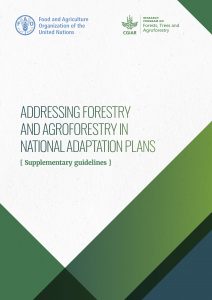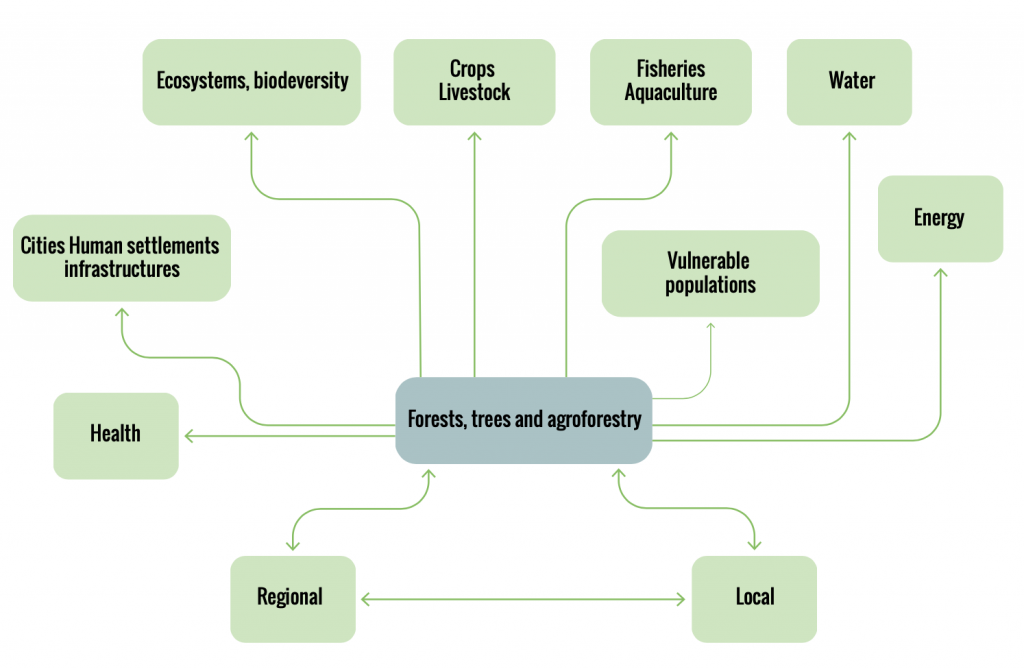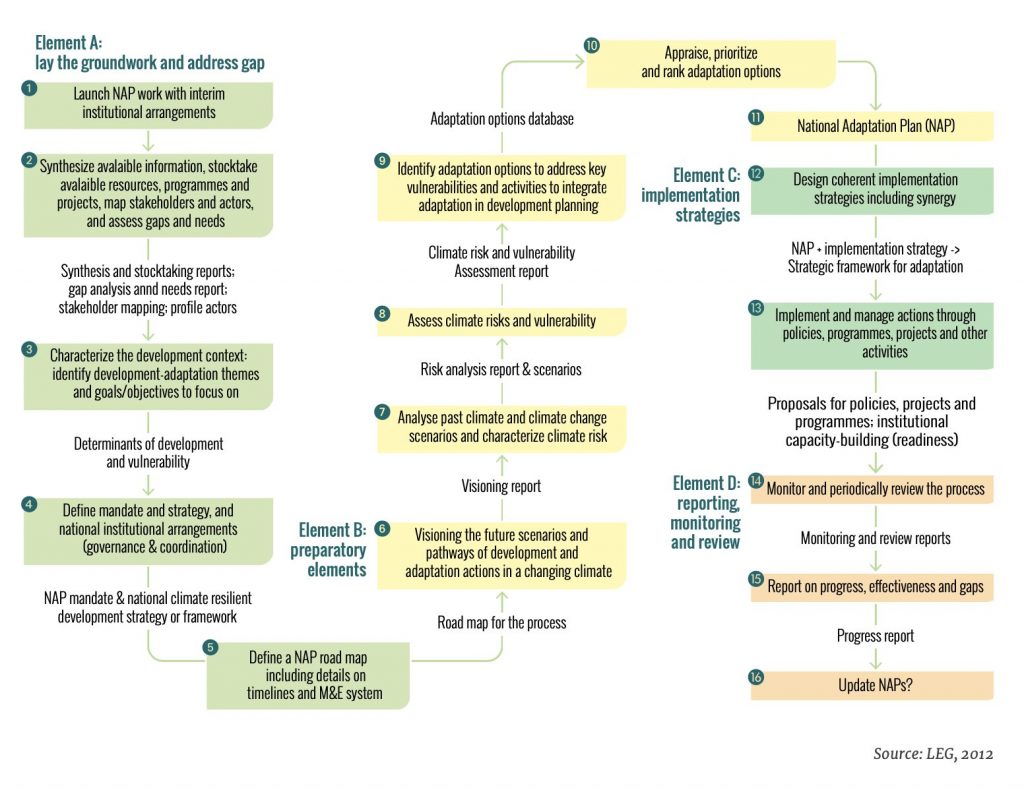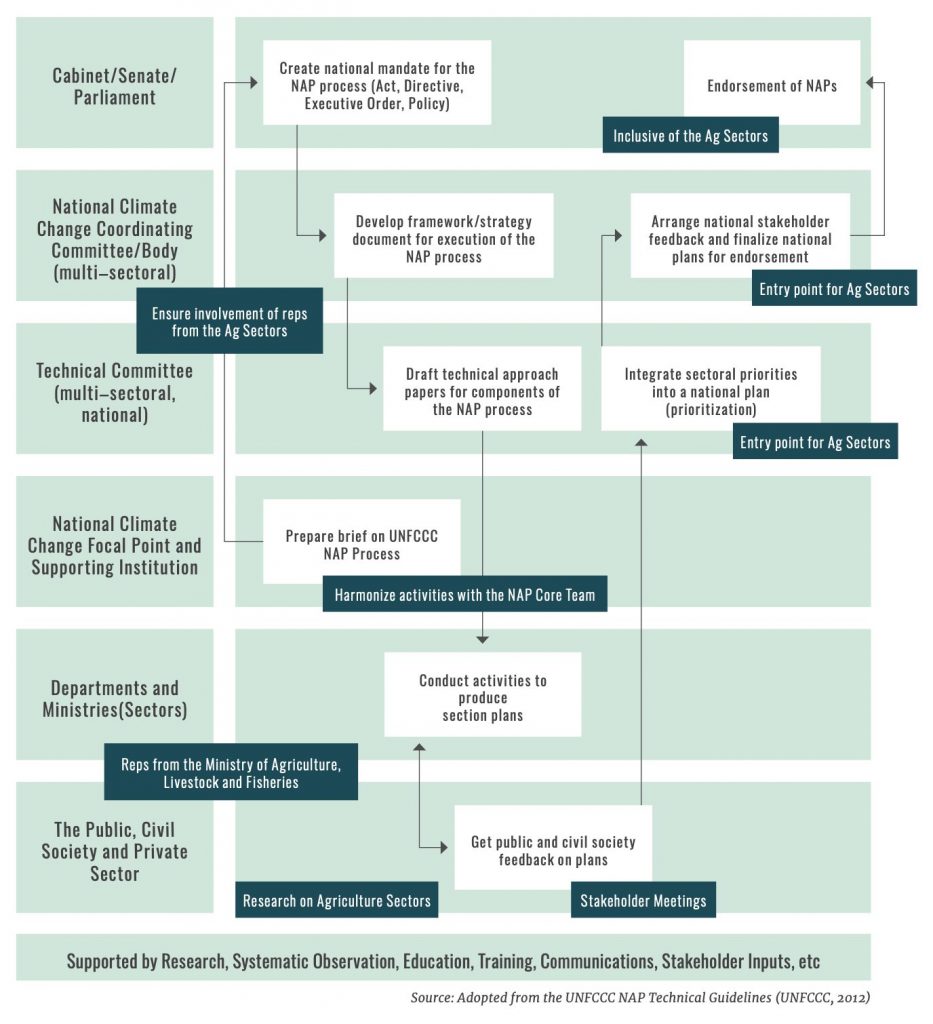New FAO-FTA supplementary guidelines on NAPs
The potential of forests and trees to mitigate global warming has long been the main focus of climate change discussions. But forests – and the livelihoods of the 1.6 billion people who depend on them – are also greatly threatened by increasing variability in temperature and precipitation, storms, pest outbreaks and more frequent and intense fires. In fact, the ability of forests and trees to adapt to these impacts will influence their ability to mitigate climate change.
Moreover, forests and trees provide so called nature-based solutions for adaptation helping other sectors build resilience. Thanks to their crucial ecosystem services, forests support crops, livestock, and fisheries, as well as prevent flooding and erosion that can threaten infrastructure, economies and people.

The new forestry guidelines highlight the importance of forestry and agroforestry for adaptation.
As climate change impacts forests, adaptation measures are needed to reduce negative impacts and maintain ecosystem functions and its biodiversity. Also forest ecosystems contribute to adaptation by providing local ecosystem services that reduce the vulnerability of local and indigenous communities and the broader society to climate change. The potential of forests and trees is overlooked in both rural and urban areas. Forest adaptation will be crucial as part of COVID-19 green recovery, and a more resilient and sustainable future, says Julia Wolf, co-author and Natural Resources Officer, FAO.

In the global agenda
Recognizing the multiple links of forests, trees and agroforestry with other activities and sectors, and the contributions they make to multiple Sustainable Development Goals (SDGs), the guidelines takes a systemic approach based on the Integrative Framework for NAPs and SDGs defined by the LEG, allowing for a more explicit consideration of how to address the SDGs through NAPs.
The UNFCCC established the NAP process for Least Developed Countries (LDCs) and for other developing countries to identify and address their medium- and long-term adaptation needs. It is the main instrument for countries to deliver on their adaptation priorities and nationally determined contributions (NDCs) under the Paris Agreement, as well as aligned climate resilience and disaster risk management measures under the Sendai Framework for Disaster Risk Reduction. By taking into account interactions between all sectors in a coordinated way, the NAP process can foster a more holistic approach to land use and landscapes.

These guidelines came out in response to a call from the FAO Committee on Forestry (COFO) in 2018 encouraging countries to incorporate forests into their NAPs, develop policies for adaptation through forests, take action to improve forest health and to restore degraded forests and landscapes. They mobiliz the existing body of knowledge related to forest management, vulnerability assessments and climate change adaptation, building on lessons learned in addressing climate change adaptation related to the agriculture sectors. They aim to provide guidance for policy- and decision-makers on adaptation planning and climate financing as well as multiple actors in the forestry and agriculture sectors, in their engagement and contribution to the NAP process at national and local levels.

To address the needs of countries more effectively, the guidelines draw on an analysis of already published NAPs, along with related documents prepared by developed countries or subnational authorities. They also draw on consultations with technical experts and key stakeholders from civil society organizations, non-governmental organizations, the private sector and international organizations, and from the NAP-Ag guidelines and the recommendations of the UNFCCC Least Developed Country Expert Group.
Forests at the heart of climate action
The guidelines invite countries to review the vulnerabilities of forests and forest dependent people. They can rely for this on another joint FAO-FTA publication, Climate change vulnerability assessment of forests and forest-dependent people: A framework methodology, released at CoP 25 in Madrid in 2019 in response to urgent calls for simple, effective approaches to conducting vulnerability assessments. It provides flexible, step-by-step guidance on how to undertake these assessments, with the aim of ramping up efforts to improve conditions for forests and people.
With the adoption of the 2030 Agenda for Sustainable Development and the Paris Agreement, the international community has pledged to ambitious collective objectives. Land use is key to all of these ambitions, especially to the commitments made by countries as set out in their NDCs. Due to their important role in mitigation, for adaptation, for sustainable management of natural resources and for food security, forests and trees are at the heart of such an integrated approach.
This article was produced by the CGIAR Research Program on Forests, Trees and Agroforestry (FTA). FTA is the world’s largest research for development program to enhance the role of forests, trees and agroforestry in sustainable development and food security and to address climate change. CIFOR leads FTA in partnership with Bioversity International, CATIE, CIRAD, INBAR, ICRAF and TBI. FTA’s work is supported by the CGIAR Trust Fund.











